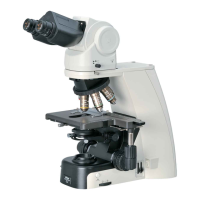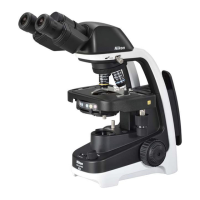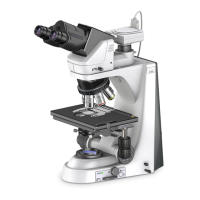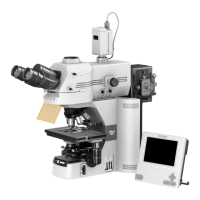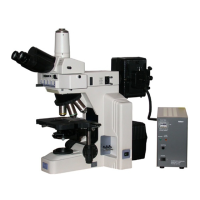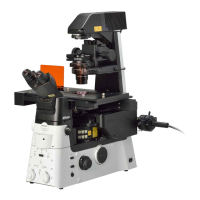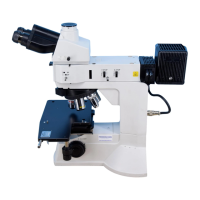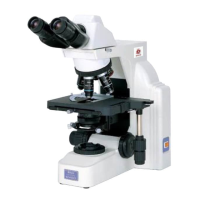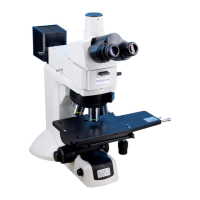Chapter 2 Individual Operations
50
Chapter 2
Individual Operations
15
Tips for Epi-fluorescence Microscopy
WARNING
The light source used with the epi-fluorescence attachment (mercury lamp) requires special care during handling
because of its characteristics. Make sure you are familiar with and adhere to all warnings and cautions described at
the beginning of this instruction manual.
Protecting the specimen and preventing it from decoloration
(shutter for the epi-fluorescence attachment)
The shutter blocks illumination.
Set the shutter open/close lever on the epi-fluorescence
attachment to position “C” to close the shutter and block the
optical path.
If the sample is continuously exposed to the strong light of the
mercury lamp, it may become damaged or decolorized.
Be sure to close the shutter when suspending the microscopy o
when pausing epi-fluorescence microscopy to perform
microscopy with diascopic light. Be sure to get into the habit o
performing this operation.
A
1
-
2
-
3
-
4
B
1
-
2 / 3
-
4
C1
-
2
-
3
-
4
1
1
4
2
3
4
CUBE
Opening/closing the shutter
Protecting from ultraviolet light (light shielding plate)
The light shielding plate is used to prevent the reflected ultraviolet light from entering the observer's eyes, which is originally
emitted through the objective, from the specimen.
Using a non-fluorescent slide, cover glass, and immersion oil
For fluorescence observations, be sure to use a non-fluorescent slide, cover glass and our designated immersion oil for an
image with better contrast.
Restricting the illumination to the area of the specimen being viewed
(adjusting the field diaphragm)
The field diaphragm is used to restrict illumination to the area of the specimen being viewed.
Turning the field diaphragm lever of the epi-fluorescence attachment changes the size of the field diaphragm.
For normal observations, stop down the diaphragm so that the aperture boundaries circumscribe or inscribe the field of
view. Opening the field diaphragm too much and illuminating a broader area than necessary will result in stray light
entering the field of view, generating flare and reducing the image contrast. In addition, the specimen will become
decolorized over a wider area.
Be sure to adjust the field diaphragm each time you change the objective.
Adjusting the brightness of the fluorescent image (adjusting the ND)
■ ND filters in the epi-fluorescence attachment
ND filters are used to adjust light intensity. Higher filter numbers correspond to lower transmittance (i.e., darker
images). ND filters do not affect the color balance.
The epi-fluorescence attachment has three ND filters (ND4, ND8, and ND16) built in.
Push in the ND filter IN/OUT levers to insert ND filters into the optical path and darken the fluorescent image.
As shown below, you can combine these three filters to achieve various levels of brightness.
Light
shielding
plate
C: Closed
Shutte
open/close
leve
O: Open
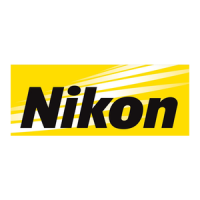
